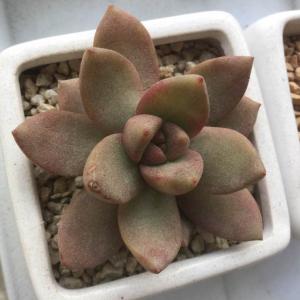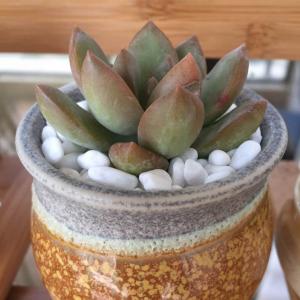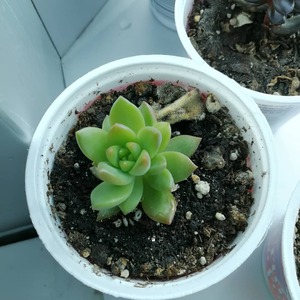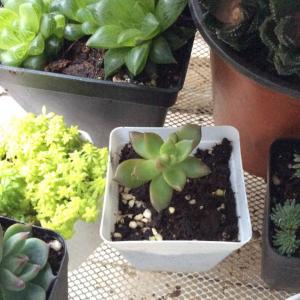动态 (221)
格桑花
2024年03月27日

The Yes Culture:
Saying "yes" to every request, opportunity, or commitment is highly valued in society. The "yes culture" may result in burnout, overcommitment, and a feeling of being overextended. Being enthusiastic and wanting to help are admirable qualities, but being able to say "no" is just as important for keeping things in perspective and protecting one's mental and emotional well-being.The Liberation of "No":
A statement of human agency and self-respect, saying "no" is not a negative action. "No" can free people from the pressures they put on themselves and, more crucially, from the expectations of others. Establishing limits via the art of refuse is a critical first step on the path to self-actualization.Preserving Mental and Emotional Energy:
Our emotional and mental stamina is limited. We run the risk of exhausting these reserves when we say "yes" to everything, which results in stress, exhaustion, and a decline in well-being. Saying "no" turns into a calculated decision that helps us avoid wasting energy and spend it in ways that are genuinely consistent with our values and objectives.Establishing Priorities:
Setting boundaries is synonymous with establishing priorities. We make room for the pursuits and connections that are genuinely important to us when we say "no" to certain obligations. This deliberate attention to priorities serves as a road map for our development, enabling us to devote our time and efforts to endeavors that are consistent with our goals and values.Protecting Time for Self-Care:
The idea of "me" time frequently gets neglected amid everyday obligations. Saying "no" frees people up to take time for introspection, self-care, and rest. This deliberate self-investment is essential for promoting resilience, preserving mental and emotional health, and advancing personal development.Fostering Respect in Relationships:
In our relationships, saying "no" has a lot of power. We convey our expectations and build a foundation of respect for one another by establishing limits and using the word "no" when necessary. Clear communication is the foundation of healthy relationships, and having the strength and confidence to say "no" when necessary helps to forge strong, enduring bonds.Avoiding Resentment:
Saying "yes" hesitantly to commitments we'd prefer to decline could cause bitterness. Relationships can be strained and personal well-being can be hampered by this unpleasant mood. By making decisions that are in line with their true values and wants, people who embrace the power of "no'' can avoid becoming resentful.Embracing Imperfection:
Saying "no" and accepting our limitations are wonderful ways to accept our imperfections and the wonderful realization that we are not meant to do everything. The ability to say "no" and embrace imperfection releases us from the unattainable ideal of perfection, promoting self-awareness and empathy.Learning to Prioritize Personal Well-Being:
Putting one's well-being first by saying "no" is an admission that essential components of a happy existence are self-care, mental wellness, and emotional equilibrium. People build a foundation for resilience and long-term growth by respecting their well-being and establishing limits.The Art of Diplomatic Refusal:
It is acceptable to politely decline offers or obligations. The art of respectfully and strategically stating "no" is what gives it its strength, not its bluntness. People can negotiate social expectations while being loyal to their own needs and objectives by developing the ability to say "no" with empathy and clear communication.Evolution through Boundaries:
Rather than being a one-time occurrence, setting boundaries is an ongoing process of self-awareness and development. People change over time, and with them so do their priorities and boundaries. The ability to say "no" has a dynamic quality that allows it to adjust to the shifting demands of both personal and professional life, acting as a catalyst for ongoing change.Conclusion:
Saying "no" can transform people by freeing them from the need to fit in and enabling them to place a higher value on their development, well-being, and genuine connections. People can live intentionally by defining limits that help them live by their goals and values. Saying "no" turns into an empowering action that also serves as a stimulus for personal development, a statement of self-respect, and a way to save mental and emotional energy. In a society that frequently honors the capacity to say "yes," accepting the art of denial as a vital instrument for a more deliberate, contented, and balanced existence is where real freedom awaits.
文章
格桑花
2024年03月26日

The Foundation of Gratitude
Gratitude is just the recognition and appreciation of life's good things. It's a straightforward but deep idea. A grateful mindset enables people to concentrate on the benefits, both large and small, that exist amid the turmoil, even though obstacles and difficulties are unavoidable.Finding Light in the Darkness
A life is frequently made up of highs and lows. The ability of gratitude to change our viewpoint in trying circumstances is what gives it its power. Even amid hardship, we might find a ray of hope by deliberately focusing on the things for which we are thankful. Resilience and mental health may be stimulated by this change of viewpoint.Cultivating a Grateful Mindset
Developing an attitude of gratitude is a daily practice rather than an isolated event. Including thankfulness in your everyday routine is the first step towards making it a practice. Making thankfulness a habit changes it from an infrequent feeling to a cornerstone of your thinking, whether you express gratitude verbally, in writing, or in quiet thoughts.The Ripple Effect of Thankfulness
Thankfulness acts as a social glue, uniting people and promoting good relationships. Relationships can become more emotionally connected and good cycles of reciprocal gratitude can be started by expressing thanks and appreciation. A grateful mindset has a contagious influence that affects relationships within families, friendships, and communities in addition to the individual.Gratitude in the Workplace
Gratitude has an impact on both personal and professional spheres. It is not just for the former. Gratitude in the workplace promotes a supportive and cooperative atmosphere. Acknowledging and valuing the work that colleagues do can improve teamwork, raise morale, and increase productivity as a whole.Mitigating the Impact of Stress
Life will always involve stress, but how we handle stressors can have a big influence on our well-being. Gratitude protects us from the damaging impacts of stress. A thankful heart is stronger, more adept at navigating obstacles, and quicker to come up with answers when presented with adversity.The Connection Between Gratitude and Mental Health
There is a strong correlation between thankfulness and mental wellness. Reducing symptoms of anxiety and depression has been linked to regular thankfulness practices. People can rewire their thought patterns and cultivate a more resilient and upbeat mental state by concentrating on the good things in life.Gratitude as a Source of Motivation
Rather than stalling personal development, a grateful mindset serves as a source of motivation. A sense of success is fueled when one can recognize and value any amount of progress. This encouragement turns into a motivating factor for ongoing development and goal-pursuing.Practical Ways to Cultivate Thankfulness
Being grateful is a continuous process that takes deliberate effort. Including techniques like journaling, giving thanks to others, engaging in mindfulness exercises, and pausing to consider the good things in life are all part of creating a thankfulness toolkit.Gratitude as a Lifestyle
Ultimately, when gratitude becomes a way of life, its transformative impact is most profound. To embrace a thankful existence, you must include thankfulness in all of your relationships, daily encounters, and introspection. It's an essential component of your outlook on and experience of life, not merely a practice.Conclusion
Gratitude has a force that goes beyond the commonplace displays of thankfulness—the capacity to change lives. The extraordinary is achieved by an attitude, viewpoint, and way of being that elevates the commonplace. People may overcome obstacles with resilience, create deep connections, and have a purposeful and happy life by recognizing and appreciating the good things in life. A heart full of gratitude resides in the vast fabric of the human experience.
文章
格桑花
2024年03月25日

The Art of Verbal Expression:
Beyond only being a means of transmitting information, language is a potent instrument. It serves as a channel for the exchange of feelings, goals, and viewpoints. People's perceptions of our words can be greatly influenced by the way we choose to express ourselves. To promote meaningful and healthy interactions, it is essential to comprehend the subtleties of linguistic expression.Direct vs. Indirect Communication:
Different people and cultures frequently have unique communication techniques. Some people prefer to communicate directly, putting their ideas and emotions out there. On the other hand, indirect communicators may express their ideas through nuance, suggested meanings, or nonverbal clues. Effective communication can be facilitated by acknowledging and accepting these differences to avoid misunderstandings.The Impact of Tone and Intonation:
The way that words are presented, including their tone and inflection, is just as important as the words themselves. Depending on the subtleties of voice expression, a sentence might signal friendliness or aggression, support or criticism. It is possible to make sure that the intended message and the desired emotional undertones are in harmony by paying attention to the way words are expressed.Empathy in Communication:
The key to successful communication is empathy, or the capacity to comprehend and experience another person's feelings. Understanding the underlying feelings and viewpoints is just as important as listening to what is being said. In relationships, a caring and sympathetic communication style promotes a stronger bond and increases mutual trust.Positive vs. Negative Framing:
Word choice and structure have a big impact on how people see the world. In contrast to negative framing, which highlights what is lost, positive framing highlights what is gained. stating something like "I appreciate your punctuality" highlights the positive, yet stating something like "You're always late" leans more toward the negative. A more upbeat and productive environment is facilitated by careful framing considerations.Assertiveness vs. Passivity vs. Aggressiveness:
There is a continuum of communication styles that includes assertive, passive, and aggressive. Clear and assertive communicators respect others while expressing their needs and ideas. Often at the expense of their own needs, passive communicators may try to avoid conflict. However, those who communicate aggressively put their wants ahead of those of others. Developing strong connections requires finding a balance between assertiveness and sensitivity.Non-Verbal Communication:
Not all communication takes place in words. The total message is greatly influenced by non-verbal clues like body language, gestures, and facial expressions. A keen awareness of these nonverbal cues facilitates understanding the bigger picture and improves verbal communication.Cultural Influences on Communication:
Understanding cultural quirks is essential in today's globalized society since culture influences communication patterns. Direct communication may be appreciated in some cultures, while others may prefer indirect or contextual expression. Cultural sensitivity facilitates intercultural communication and guards against inadvertent misunderstandings.Communication in Conflict Resolution:
Any relationship will inevitably have disagreements, and how we handle them as a couple will influence how they turn out. The three most important communication techniques in conflict resolution are avoiding placing blame, actively listening to the other person, and expressing sentiments through "I" statements. These methods encourage resolution rather than escalation and assist in identifying common ground.The Role of Active Listening:
Effective communication necessitates active listening. Not only must the words be heard, but the underlying feelings and intentions must also be comprehended. Active listening improves communication and fortifies bonds between people by giving complete attention, maintaining eye contact, and paraphrasing to verify understanding.Adaptability in Communication:
To navigate the different types seen in different partnerships, communication flexibility is essential. It shows that you are willing to connect with people when you can adjust to their communication preferences. It also creates an atmosphere where everyone feels heard and understood.Conclusion
Words are the builders of our connections, not just carriers of information. The dynamics of our relationships with people are greatly influenced by the words we use, the method we communicate, and the subtleties we include. Understanding the value of different communication styles, accepting empathy, and encouraging clear and concise communication are some of the ways we help to build relationships based on mutual respect, understanding, and meaningful connection. The skill of communication becomes an invaluable instrument for laying the groundwork for future connections and weaving a web of satisfying and meaningful interactions in a world where words matter.
文章
格桑花
2024年03月24日

Understanding the Happiness Equation
It's important to comprehend the formula underlying our emotional well-being before we set out on the path of happiness practices. A formula, H = S + C + V, is suggested by researchers such as the father of positive psychology, Martin Seligman. Our genetic set point (S), our circumstances in life (C), and our voluntary activities (V) add up to our happiness (H). Although heredity and environment also play a part, the interesting stuff is in the area of voluntary activities, or the deliberate routines and habits we can develop to increase our level of happiness overall.Gratitude: The Attitude of Abundance
The transformational power of gratitude is at the heart of many happiness practices. Having gratitude is not just saying "thank you" with grace; it's a mental attitude that emphasizes the abundance in our lives instead of the scarcity. Research has demonstrated that maintaining a gratitude journal, where you write down three things you are grateful for every day, improves general well-being. According to science, gratitude causes the feel-good neurotransmitter dopamine to activate in specific brain regions. By rewiring the brain to recognize and value life's positive aspects, it cultivates a more positive outlook. To put it simply, cultivating gratitude is akin to raising our awareness of the joyous melody present in ordinary moments.Mindfulness: Present Moments, Lasting Happiness
The practice of mindfulness shows itself to be a potent tool for keeping ourselves anchored in the present moment in a world full of distractions. Originating in antiquated contemplative practices, mindfulness has been shown by science to have favorable impacts on mental well-being. Studies show that practicing mindfulness regularly can help lower stress, anxiety, and depressive symptoms. Our emotional well-being can change significantly just by simply focusing on our breath, feelings, or environment. By allowing us to detach from the routine of everyday existence and appreciate the uniqueness of every instant, mindfulness promotes a feeling of tranquility and satisfaction.Acts of Kindness: The Ripple Effect of Goodness
Acts of kindness are beneficial not only to the other person but also to ourselves and are a powerful source of happiness. The theory behind the "helper's high" holds that doing good deeds, no matter how small, causes the brain to release feel-good chemicals like endorphins and oxytocin. Simple deeds like holding a door for someone, paying a sincere compliment, or giving of your time can all help someone feel purposeful and fulfilled. Acts of kindness don't have to be elaborate spectacles. Goodness has a cascading effect that improves the well-being of both the giver and the recipient long after the initial deed is completed.Cultivating Positive Relationships: The Key to Long-term Happiness
Since relationships are essential to human happiness, it is important to recognize that humans are social creatures. Strong social ties are a major predictor of well-being, according to a growing body of research. Not only should we surround ourselves with supportive people, but we also need to actively nurture and invest in those relationships to cultivate positive relationships. Meaningful relationships are built on authenticity and vulnerability. A network of emotional support acts as a barrier against life's obstacles and is facilitated by actively listening, sharing our joys and struggles, and encouraging a sense of belonging. Indeed, as they say, "Happiness is only real when shared."Finding Flow: The State of Optimal Experience
The term "flow" refers to a state of optimal experience that occurs when we are completely absorbed and immersed in an activity. It was first used by psychologist Mihaly Csikszentmihalyi. Finding flow gives work a sense of direction and fulfillment, whether it be in writing, painting, or playing an instrument. Find activities that play to your passions and strengths to cultivate flow. To achieve the right balance between challenge and skill, one must take on tasks that are neither excessively easy nor too difficult. Time appears to stop when one is in the flow, and their sense of self is harmoniously merged with the task at hand.Investing in Personal Growth: The Pursuit of Mastery
Our general happiness is greatly influenced by ongoing education and personal development. A sense of purpose and achievement can be gained from pursuing mastery in any endeavor, be it a hobby, a professional skill, or a personal development objective. The brain's reward system is triggered by setting and accomplishing meaningful goals of any size, which releases dopamine and promotes a feeling of pride. A personal growth journey is not just about reaching a certain place; it's also about evolving as a person, accepting hardship, and appreciating the resiliency that comes from lifelong learning.Conclusion: A Symphony of Practices for Lasting Happiness
Through a symphony of practices woven into our daily lives, the science of happiness reveals a melody of long-lasting contentment. Every practice adds to the harmonious composition of our well-being, from acts of kindness and gratitude to mindfulness and the quest for personal development. Let us embrace the wisdom that comes from both traditional and contemporary science as we navigate life's complexities. Rather than a destination, happiness is a journey enhanced by deliberate actions that uplift our souls, build resilience, and show us the way to a genuinely happy and meaningful life.
文章
格桑花
2024年03月21日

The Digital Onslaught:
The ubiquitous impact of digital technology has transformed our lifestyle, occupation, and social interactions. We are constantly engaged in digital media thanks to email notifications, social media updates, and the temptation of having access to infinite content. Although there is no denying the advantages of these technological developments, they also bring with them a new type of stress known as "digital fatigue" or "screen fatigue."The Call for a Digital Detox:
Remaining offline for a while from electronic gadgets and internet activities is known as a "digital detox." It's an intentional attempt to make room for real human interactions, promote mental health, and take back control of the incessant barrage of information. This is a step-by-step guide to help you restore your real-world connection.Acknowledge the Need:
Realizing that a digital detox is necessary is the first step in starting one. Think about how much time you spend on the internet, how it affects your mental health, and how well you interact with people in person. To truly commit to change, one must be able to identify the symptoms of digital overwhelm.Set Clear Intentions:
Set objectives for the digital fast. Setting specific goals for your detox journey—whether it's to cut down on screen time, increase focus, or strengthen relationships—will help you stay on track. When you're tempted to grab your device, remind yourself of your goals by writing them down.Establish Boundaries:
Establish specified times and areas for the use of technology. Establish designated "no-phone zones" in your house, like the dining room or the bedroom, and set aside particular times for social media and email checking. Reducing reliance on digital devices gradually is made easier by setting boundaries.Plan Offline Activities:
Rekindle your enjoyment of offline activities. Reading physical books, practicing playing an instrument, or taking part in outdoor activities are examples of non-screen-based hobbies. If you schedule these tasks ahead of time, you'll have satisfying options available for when the urge to scroll hits.Digital Declutter:
It's crucial to tidy your digital area in the same way that you tidy your physical area. Organize your files, unsubscribe from pointless newsletters, and remove any apps that don't improve your life. Control and order are enhanced by a simplified digital environment.Embrace Mindfulness:
To develop awareness of your digital habits, engage in mindfulness practices. When using technology, be mindful of the feelings, ideas, and sensations that come up. Using techniques like mindful breathing and meditation can help you become more grounded in the here and now.Reflect and Adjust:
Evaluate your progress regularly and consider the effects of your digital detox. Observe how your emotional and mental health has improved. Be adaptable and change your strategy as necessary if obstacles appear. A sustainable balance between the digital and physical worlds is the aim.The Transformative Power of Unplugging:
Regaining control over technology and creating a positive relationship with it are the goals of a digital detox rather than giving it up entirely. People who unplug from the digital cacophony frequently report better sleep, less stress, sharper focus, and a deeper appreciation of the richness of in-person experiences. Beyond improved mental health, there are deeper connections, increased creativity, and a stronger sense of presence among the advantages. Unplugging enables us to escape the virtual world and interact with the outside world more genuinely.Conclusion
A digital detox is an effective way to regain equilibrium in a world where screens rule people's lives and to get back in touch with the real world. The decision to turn away from digital distractions and rediscover the beauty of in-person relationships, the tranquility of nature, and the depth of offline experiences is a conscious one. Intention, dedication, and a readiness to accept the transformative potential of disconnecting are necessary when starting a digital detox. As you travel along this path, keep in mind that the objective is to create a harmonious relationship that places a premium on real connections, mindfulness, and the joy of experiencing life in the real world rather than getting rid of technology entirely.
文章
格桑花
2024年03月20日

Mindful Breathing in Traffic:
Think of this: It's getting stressful because you're stuck in bumper-to-bumper traffic. Make your car into a portable Zen retreat rather than giving in to road rage. Inhale deeply and slowly as you practice mindful breathing. Count to four by inhaling, holding, and then exhaling. Using this easy method, you can create a private haven in your car while also calming your nervous system.Desk Yoga at Work:
Stress both physically and mentally can be increased by prolonged desk sitting. Incorporate desk yoga into your work routine to combat the stress monster. You can quietly perform basic yoga poses and stretches at your desk, such as forward bends and neck rotations. It not only eases physical tension but also clears your mind, making you feel less anxious and more focused.Finger Acupressure for Instant Relief:
Your fingers are the key to relieving tension. Use acupressure by lightly pressing on certain points on your fingers. A powerful area for relieving stress is the space between your thumb and index finger. For a minute, pinch the fleshy area, and feel the tension release. This tactful method reduces anxiety before a presentation or in a boardroom.Nature Connection During Lunch Breaks:
Take a break from the concrete jungle during your lunch break and find peace in the great outdoors, even if it's just a park nearby. Stress levels are significantly reduced by spending time outside in an environment rich in greenery. Sit on a bench or go for a leisurely walk and take in the scenery. You get a mental reset in the tranquility of nature, which refuels you for the rest of the day.Laughter Meditation:
Even for stress, laughter is genuinely the best medicine. Laughing meditation is a technique that mixes deep breathing with uncontrollably laughing. Take a few deep breaths, find a quiet corner, and then laugh heartily. After a brief period of forced laughter, real laughter will show through. This improves your mood in addition to lowering stress hormones, which makes you feel happier and lighter overall.Sensory Reset with Aromatherapy:
Always have a tiny vial of essential oil on you, like peppermint or lavender. When tension rises, pause to breathe in the calming scent. Since ancient times, essential oils have been used to encourage calm and reduce stress. Aromatherapy is a readily available stress-relieving tool because of its ability to transport you to a calmer state of mind.Tapping Away Tension:
The Emotional Freedom Technique (EFT), commonly referred to as tapping, is tapping on certain body meridian points with gentle pressure while concentrating on the stressor of the moment. This method relieves tension and helps let go of bad feelings. In public places, you can tap lightly on the side of your hand, under your nose, and on your collarbone without drawing too much attention. It's an effective technique to change your attitude and energy.Conclusion
These non-traditional, anytime, anywhere stress-reduction methods are unbeatable by stress. You will be more capable of overcoming the obstacles of contemporary life if you incorporate them into your daily routine. As always, consistency is key. By incorporating these techniques into your routine, you'll eventually develop a stronger sense of well-being in addition to efficient stress management. Therefore, these techniques are your pass to a stress-free zone at any time and anywhere, be it in the office, stuck in traffic, or just need a moment of calm.
文章
格桑花
2024年03月19日

Assess Your Priorities and Make Self-Care a Priority:
The first step in creating a self-care routine is to prioritize it in your life. Understand that self-care is not a luxury but a necessity for your physical, mental, and emotional well-being. Take a moment to evaluate your current priorities and commitments, and identify areas where you can carve out time for self-care. Make a conscious decision to allocate time for self-care activities and treat them as non-negotiable appointments with yourself. Once you have recognized the importance of self-care, it becomes easier to integrate it into your daily routine.Start with Small Steps:
When you have a busy schedule, it can be overwhelming to think about adding more tasks to your already packed day. Start by incorporating small self-care practices into your routine. These small steps can make a significant impact on your overall well-being without requiring a significant time commitment. For example, take five minutes each morning to practice deep breathing or mindfulness. Incorporate a short walk during your lunch break to get some fresh air and clear your mind. These small acts of self-care can be easily integrated into your existing schedule and provide immediate benefits.Create a Morning Ritual:
Establishing a morning ritual sets the tone for the rest of the day and allows you to start your day with intention and calm. Wake up a little earlier to give yourself some dedicated "me" time before the rush begins. This time can be used for activities that nourish your mind, body, and soul. Consider activities like meditation, journaling, reading, or practicing yoga. Engaging in activities that bring you joy and set a positive tone for the day can help reduce stress and increase overall well-being.Incorporate Mindfulness and Meditation:
Mindfulness and meditation are powerful practices that can help reduce stress, increase focus, and promote a sense of calm. These practices can be incorporated into your daily routine, even in small increments of time. Set aside a few minutes each day for mindful breathing exercises or guided meditation. There are numerous apps and online resources available that offer short meditation and mindfulness sessions designed for busy individuals. By taking a few moments to pause and connect with yourself, you can bring a sense of calm and clarity to your busy day.Schedule Regular Breaks:
In the midst of a busy day, it's crucial to take regular breaks to recharge and reset. Many individuals tend to push through without breaks, which can lead to burnout and decreased productivity in the long run. Schedule short breaks throughout the day to step away from your work or responsibilities. Use this time to engage in activities that help you relax and recharge, such as stretching, taking a short walk, listening to calming music, or enjoying a healthy snack. These moments of respite will help you regain focus, boost creativity, and maintain your energy levels throughout the day.Practice Self-Compassion and Set Boundaries:
Self-care also involves practicing self-compassion and setting healthy boundaries. Learn to say no to commitments or tasks that do not align with your priorities or drain your energy. Understand that setting boundaries is not selfish; it is essential for your well-being and allows you to create space for self-care. When you prioritize self-care and set boundaries, you create a healthier work-life balance, reduce stress, and prevent burnout. Remember, taking care of yourself is not a selfish act but a necessary one to show up as your best self in all aspects of life.Engage in Activities That Bring You Joy:
Identify activities that bring you joy and make time for them regularly. Engaging in activities that you genuinely enjoy helps reduce stress and promotes a sense of fulfillment. It could be anything from practicing a hobby, reading a book, spending time in nature, or engaging in creative pursuits. By incorporating activities that bring you joy into your self-care routine, you infuse your life with positivity and create space for relaxation and rejuvenation.Create a Sanctuary at Home:
Your home environment plays a significant role in your overall well-being. Create a calming and rejuvenating sanctuary within your home where you can retreat and unwind. Designate a specific space, such as a corner in a room, where you can engage in self-care activities without distractions. Personalize this space with elements that bring you peace, such as soft lighting, comfortable seating, plants, or calming scents. This designated area will serve as a visual reminder to prioritize self-care and provide a physical space for relaxation and rejuvenation.Disconnect from Technology:
In today's digital age, it is crucial to disconnect from technology regularly to recharge and find balance. Set boundaries around your technology usage, especially during your self-care time. Turn off notifications or put your phone on silent to minimize distractions. Instead of mindlessly scrolling through social media or constantly checking emails, use your self-care time to engage in activities that nourish your mind and body. Disconnecting from technology allows you to be present in the moment and fully immerse yourself in the self-care practices you engage in. Creating a calming and rejuvenating self-care routine is essential for busy individuals to maintain their overall well-being and prevent burnout. By assessing priorities, starting with small steps, and making self-care a non-negotiable part of your day, you can create a sustainable routine that fits into your hectic schedule. Incorporate mindfulness and meditation, schedule regular breaks, and practice self-compassion and setting boundaries. Engage in activities that bring you joy and create a sanctuary at home where you can retreat and unwind. Disconnect from technology, practice gratitude, prioritize quality sleep, and seek support when needed. Remember, self-care is not a luxury but a necessity. By prioritizing self-care and creating a routine that supports your well-being, you can navigate the busy demands of life with greater ease, balance, and rejuvenation. Take the first step today and commit to creating a self-care routine that nourishes your mind, body, and soul.
文章
格桑花
2024年03月17日

Embrace a Growth Mindset:
The first step in navigating personal growth during life transitions is to adopt a growth mindset. Embrace the idea that change brings opportunities for learning, development, and self-improvement. Instead of viewing transitions as obstacles, see them as chances to discover new strengths, expand your skills, and gain a fresh perspective on life. By cultivating a growth mindset, you open yourself up to the possibilities that come with change. Embrace the belief that you have the ability to learn and adapt to new circumstances, and that growth and personal development are lifelong journeys.Practice Self-Reflection:
During life transitions, it's important to take time for self-reflection. Reflect on your values, aspirations, and goals. Consider how the current transition aligns with your long-term vision for your life. This self-reflection will help you gain clarity and make informed decisions during the transition. Self-reflection also allows you to understand your strengths, weaknesses, and areas for growth. Take time to identify what skills or resources you might need to navigate the transition successfully. This self-awareness will empower you to take proactive steps towards personal growth and development.Embrace Uncertainty and Let Go of Control:
Transitions often bring uncertainty, and it's natural to feel uncomfortable with the unknown. However, embracing uncertainty is crucial for personal growth. Recognize that change is a constant in life, and resisting it will only create unnecessary stress and hinder your growth. Instead of trying to control every aspect of the transition, focus on what you can control – your attitude, mindset, and actions. Embrace the idea that the unknown can bring new opportunities and experiences. Trust in your ability to adapt and learn from the challenges that arise during the transition.Seek Support and Connect with Others:
During life transitions, it's important to seek support and connect with others who can provide guidance, encouragement, and understanding. Reach out to friends, family, or mentors who have experienced similar transitions. Share your thoughts, fears, and aspirations with them. Joining support groups or seeking professional help can also be beneficial. These communities provide a safe space to discuss your experiences, gain insights from others, and receive emotional support during the transition.Set Realistic Goals and Take Small Steps:
Setting realistic goals and taking small steps towards them is essential for personal growth during transitions. Break down your larger goals into smaller, manageable tasks that you can accomplish on a regular basis. This approach helps you stay focused, motivated, and allows for a sense of progress. Celebrate each milestone, no matter how small, as it shows that you are moving forward. By taking consistent, incremental steps, you build momentum and confidence, which fuels your personal growth during the transition.Practice Self-Care:
During life transitions, it's easy to get caught up in the demands and stress of the change. However, practicing self-care is crucial for your well-being and personal growth. Make sure to prioritize activities that nourish your mind, body, and soul. Engage in activities that promote relaxation, such as meditation, exercise, or spending time in nature. Take breaks to do things you enjoy, whether it's reading a book, pursuing a hobby, or spending quality time with loved ones. Remember to also prioritize self-compassion and be patient with yourself as you navigate the transition.Cultivate Resilience and Learn from Setbacks:
Life transitions can come with setbacks and challenges. Cultivating resilience is essential for navigating these obstacles and continuing your personal growth. Embrace setbacks as learning opportunities and identify the lessons they bring. View challenges as a chance to develop new skills, problem-solving abilities, and resilience. Embracing setbacks with a growth mindset allows you to bounce back stronger and continue your personal growth journey with newfound wisdom and strength. Life transitions are inevitable, and embracing change and personal growth during these times is crucial for our well-being and development. By adopting a growth mindset, practicing self-reflection, embracing uncertainty, seeking support, setting realistic goals, practicing self-care, and cultivating resilience, you can navigate life transitions with grace and promote personal growth along the way. Remember, each transition is an opportunity for self-discovery, learning, and becoming the best version of yourself. Embrace the journey and embrace the change.
文章
格桑花
2024年03月16日

Building Emotional Connection:
Quality time is a fundamental component in building emotional connection with our loved ones. By dedicating uninterrupted time to be present with each other, we create a safe and nurturing space where genuine emotional connection can flourish.
In today's technology-driven era, it is easy to get distracted by screens and external stimuli, leading to a lack of true engagement in our relationships. However, by deliberately setting aside time to be fully present with our loved ones, we demonstrate our commitment to them and our desire to deepen the emotional bond.
During quality time, we engage in active listening, open communication, and genuine empathy. These elements allow us to truly understand and connect with our loved ones on a deeper level, fostering trust, intimacy, and a sense of belonging.
Strengthening Trust and Reliability:
Quality time plays a crucial role in strengthening trust and reliability within relationships. When we consistently dedicate time to spend with our loved ones, we demonstrate our commitment and reliability to them.
By consistently showing up and being present, we build a foundation of trust and dependability. Our loved ones learn to rely on us and feel secure in the knowledge that we prioritize and value our relationship with them.
Quality time allows us to create shared experiences, memories, and traditions, which further enhance the bond of trust and reliability. These shared experiences become touchstones and reminders of our commitment and love for each other, strengthening the foundation of our relationship.
Enhancing Communication and Understanding:
Quality time provides an opportunity for open and honest communication, which is essential for the growth and longevity of any relationship. When we dedicate uninterrupted time to be present with our loved ones, we create an environment that encourages open dialogue and deepens our understanding of each other.
During quality time, we can engage in meaningful conversations, share our thoughts, feelings, and aspirations, and truly listen to one another. This allows us to gain insights into each other's perspectives, needs, and desires, fostering empathy, compassion, and a deeper understanding of our loved ones.
By actively engaging in quality time, we create a space where difficult conversations can take place. We can address conflicts, express our needs and concerns, and work towards resolutions. This open and authentic communication strengthens the foundation of our relationships and promotes emotional well-being.
Creating Shared Meaning and Memories:
Meaningful experiences created during quality time become cherished memories that bind us together. These shared experiences form the fabric of our relationships, providing a sense of joy, fulfillment, and connection.
Whether it is taking a vacation together, engaging in a shared hobby, or simply spending quality time engaging in activities that bring us joy, these experiences create lasting memories that we can reflect upon and cherish.
Shared meaning and memories provide a sense of belonging and identity within a relationship. They create a narrative that weaves our lives together, reminding us of the love, joy, and growth we have experienced together. These memories become touchstones that we can return to during challenging times, providing strength and resilience to our relationships.
Balancing Individual and Relationship Needs:
Quality time allows for a balance between individual and relationship needs. While it is important to have independence and pursue individual interests, dedicating quality time ensures that the needs of the relationship are also given priority.
By setting aside dedicated time for our loved ones, we demonstrate our commitment to nurturing the relationship. This balance allows for individual growth and self-care, while also fostering the connection and emotional well-being of the relationship.
Quality time provides an opportunity to create rituals and traditions that cater to both individual and relationship needs. By finding activities that bring us joy and fulfillment as individuals and incorporating them into our shared experiences, we strike a balance that nourishes both the individual and the relationship.
In a world that often emphasizes productivity and efficiency, it is crucial to prioritize quality time and create meaningful experiences in our relationships. Quality time builds emotional connection, strengthens trust and reliability, enhances communication and understanding, creates shared meaning and memories, and balances individual and relationship needs.
By dedicating uninterrupted time to be fully present with our loved ones, we foster a sense of belonging, deepen our emotional bond, and create a foundation of trust and reliability. Quality time allows us to engage in open and honest communication, gaining a deeper understanding of each other and nurturing the growth of our relationships.
Creating meaningful experiences during quality time helps us build cherished memories that bind us together and provide a sense of joy, fulfillment, and connection. By striking a balance between individual and relationship needs, we ensure the emotional well-being and satisfaction of both ourselves and our loved ones.
In conclusion, dedicating quality time and creating meaningful experiences in our relationships is essential for fostering emotional connection, trust, communication, shared meaning, and balance. By prioritizing quality time, we invest in the depth and longevity of our relationships, leading to greater happiness, fulfillment, and overall well-being in our lives.
Strengthening Trust and Reliability:
Quality time plays a crucial role in strengthening trust and reliability within relationships. When we consistently dedicate time to spend with our loved ones, we demonstrate our commitment and reliability to them. By consistently showing up and being present, we build a foundation of trust and dependability. Our loved ones learn to rely on us and feel secure in the knowledge that we prioritize and value our relationship with them. Quality time allows us to create shared experiences, memories, and traditions, which further enhance the bond of trust and reliability. These shared experiences become touchstones and reminders of our commitment and love for each other, strengthening the foundation of our relationship.Enhancing Communication and Understanding:
Quality time provides an opportunity for open and honest communication, which is essential for the growth and longevity of any relationship. When we dedicate uninterrupted time to be present with our loved ones, we create an environment that encourages open dialogue and deepens our understanding of each other. During quality time, we can engage in meaningful conversations, share our thoughts, feelings, and aspirations, and truly listen to one another. This allows us to gain insights into each other's perspectives, needs, and desires, fostering empathy, compassion, and a deeper understanding of our loved ones. By actively engaging in quality time, we create a space where difficult conversations can take place. We can address conflicts, express our needs and concerns, and work towards resolutions. This open and authentic communication strengthens the foundation of our relationships and promotes emotional well-being.Creating Shared Meaning and Memories:
Meaningful experiences created during quality time become cherished memories that bind us together. These shared experiences form the fabric of our relationships, providing a sense of joy, fulfillment, and connection. Whether it is taking a vacation together, engaging in a shared hobby, or simply spending quality time engaging in activities that bring us joy, these experiences create lasting memories that we can reflect upon and cherish. Shared meaning and memories provide a sense of belonging and identity within a relationship. They create a narrative that weaves our lives together, reminding us of the love, joy, and growth we have experienced together. These memories become touchstones that we can return to during challenging times, providing strength and resilience to our relationships.Balancing Individual and Relationship Needs:
Quality time allows for a balance between individual and relationship needs. While it is important to have independence and pursue individual interests, dedicating quality time ensures that the needs of the relationship are also given priority. By setting aside dedicated time for our loved ones, we demonstrate our commitment to nurturing the relationship. This balance allows for individual growth and self-care, while also fostering the connection and emotional well-being of the relationship. Quality time provides an opportunity to create rituals and traditions that cater to both individual and relationship needs. By finding activities that bring us joy and fulfillment as individuals and incorporating them into our shared experiences, we strike a balance that nourishes both the individual and the relationship. In a world that often emphasizes productivity and efficiency, it is crucial to prioritize quality time and create meaningful experiences in our relationships. Quality time builds emotional connection, strengthens trust and reliability, enhances communication and understanding, creates shared meaning and memories, and balances individual and relationship needs. By dedicating uninterrupted time to be fully present with our loved ones, we foster a sense of belonging, deepen our emotional bond, and create a foundation of trust and reliability. Quality time allows us to engage in open and honest communication, gaining a deeper understanding of each other and nurturing the growth of our relationships. Creating meaningful experiences during quality time helps us build cherished memories that bind us together and provide a sense of joy, fulfillment, and connection. By striking a balance between individual and relationship needs, we ensure the emotional well-being and satisfaction of both ourselves and our loved ones. In conclusion, dedicating quality time and creating meaningful experiences in our relationships is essential for fostering emotional connection, trust, communication, shared meaning, and balance. By prioritizing quality time, we invest in the depth and longevity of our relationships, leading to greater happiness, fulfillment, and overall well-being in our lives.
文章
格桑花
2024年03月15日

Preserving Emotional Energy:
Setting healthy boundaries allows us to preserve and protect our emotional energy. When we establish clear limits, we prevent others from encroaching upon our emotional reserves and draining us emotionally. This is particularly important in relationships and friendships where we may find ourselves constantly giving, accommodating, and sacrificing our own needs. By setting boundaries, we create a space that honors and prioritizes our emotional well-being. Boundaries help us distinguish between our own emotions and the emotions of others. It enables us to recognize when we are taking on too much emotional burden or when someone is crossing our boundaries and causing emotional distress. By establishing and communicating our limits, we empower ourselves to say no when necessary, ensuring that our emotional energy is conserved for our own well-being and self-care.Promoting Self-care and Personal Growth:
Setting healthy boundaries is an essential aspect of self-care. It allows us to prioritize our own needs, desires, and goals. By defining what is acceptable and unacceptable in our relationships and interactions, we create space for self-nurturing activities and experiences that promote personal growth and well-being. When we set boundaries, we communicate to ourselves and others that our self-care is a priority. This may involve saying no to additional responsibilities that overwhelm us, carving out time for relaxation and self-reflection, or engaging in activities that bring us joy and fulfillment. By honoring our boundaries, we create an environment that supports our emotional well-being, allowing us to flourish and grow as individuals.Enhancing Relationships:
Contrary to popular belief, setting boundaries does not necessarily create distance or strain in relationships. In fact, healthy boundaries can enhance and strengthen our connections with others. When we clearly communicate our needs, limits, and expectations, we foster open and honest communication, which is the foundation of healthy relationships. Boundaries provide a framework for mutual respect and understanding. They establish guidelines for how we want to be treated and how we want to treat others. By setting boundaries, we create a safe space for open dialogue, where both parties feel heard and valued. This fosters trust, intimacy, and emotional well-being within our relationships. Furthermore, setting boundaries teaches others how to respect and value us. It sets the tone for how we want to be treated, ensuring that our relationships are based on mutual respect and consideration. This not only benefits our emotional well-being but also contributes to the overall health and longevity of our relationships.Reducing Stress and Anxiety:
One of the key benefits of setting healthy boundaries is the reduction of stress and anxiety. When we establish boundaries, we create a sense of predictability and control over our lives. This predictability helps to reduce uncertainty and anxiety, allowing us to feel more grounded and at ease. Setting boundaries also eliminates the need to constantly please others or meet unrealistic expectations. It frees us from the pressure to say yes to everything, even when it compromises our emotional well-being. By setting limits, we create a sense of balance and control in our lives, reducing the stress and anxiety that can arise from overcommitment and overwhelm.Fostering Self-respect and Empowerment:
Setting healthy boundaries is an act of self-respect and empowerment. It is an acknowledgment of our own worth, needs, and values. By establishing and enforcing boundaries, we demonstrate to ourselves and others that we deserve to be treated with respect and dignity. Boundaries empower us to take control of our lives and make choices that align with our values and well-being. It allows us to advocate for ourselves and assert our needs, without fear of judgment or rejection. This self-advocacy cultivates a sense of empowerment and self-confidence, which positively impacts our emotional well-being and overall quality of life. Setting healthy boundaries is essential for our emotional well-being and self-care. By preserving our emotional energy, promoting self-care, enhancing relationships, reducing stress and anxiety, and fostering self-respect and empowerment, boundaries play a crucial role in maintaining our emotional balance and overall happiness. By establishing and enforcing boundaries, we create a foundation for healthy relationships, personal growth, and emotional well-being. Prioritizing our boundaries allows us to live authentically and cultivate a life that aligns with our values, needs, and desires.
文章
相关用户

















